-
History & Society
- Education in Pre-war Hong Kong
- History of Taikoo Sugar Refinery
- Hong Kong Products Exhibition
- Local Festivals Around the Year
- Post-war Industries
- Pre-war Industry
- The Hong Kong Jockey Club Archives
- Tin Hau Festival
- Memories We Share: Hong Kong in the 1960s and 1970s
- History in Miniature: The 150th Anniversary of Stamp Issuance in Hong Kong
- A Partnership with the People: KAAA and Post-war Agricultural Hong Kong
- The Oral Legacies (I) - Intangible Cultural Heritage of Hong Kong
- Hong Kong Currency
- Hong Kong, Benevolent City: Tung Wah and the Growth of Chinese Communities
- The Oral Legacies Series II: the Representative List of the Intangible Cultural Heritage of Hong Kong
- Braving the Storm: Hong Kong under Japanese Occupation
- A Century of Fashion: Hong Kong Cheongsam Story
Geography & EnvironmentArt & Culture- Calendar Posters of Kwan Wai-nung
- Festival of Hong Kong
- Ho Sau: Poetic Photography of Daily Life
- Hong Kong Cemetery
- Sketches by Kong Kai-ming
- The Culture of Bamboo Scaffolding
- The Legend of Silk and Wood: A Hong Kong Qin Story
- Journeys of Leung Ping Kwan
- From Soya Bean Milk To Pu'er Tea
- Applauding Hong Kong Pop Legend: Roman Tam
- 他 FASHION 傳奇 EDDIE LAU 她 IMAGE 百變 劉培基
- A Eulogy of Hong Kong Landscape in Painting: The Art of Huang Bore
- Imprint of the Heart: Artistic Journey of Huang Xinbo
- Porcelain and Painting
- A Voice for the Ages, a Master of his Art – A Tribute to Lam Kar Sing
- Memories of Renowned Lyricist: Richard Lam Chun Keung's Manuscripts
- Seal Carving in Lingnan
- Literary Giant - Jin Yong and Louis Cha
Communication & Media- Hong Kong Historical Postcards
- Shaw Brothers’ Movies
- Transcending Space and Time – Early Cinematic Experience of Hong Kong
- Remembrance of the Avant-Garde: Archival Camera Collection
- Down Memory Lane: Movie Theatres of the Olden Days
- 90 Years of Public Service Broadcasting in Hong Kong
- Multifarious Arrays of Weaponry in Hong Kong Cinema
-
History & SocietyGeography & EnvironmentArt & Culture
-
View Oral History RecordsFeatured StoriesAbout Hong Kong Voices
-
Hong Kong Memory
- Collection
- All Items
- Oral History
Recently VisitedOral History
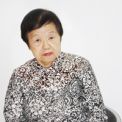
- Shifting from trading to manufacturing was a rare choice, Expansion of production capacity: from ...
Kwong Wing Hing, where Lai Kit Fong’s husband Lee Sai Yik used to work, was on Kwong Yuen Street East in Sheung Wan. The main commodities traded there included combs, razors, hair brushes, belts and needles from the UK. From 1950, the couple started their own trading business. However, since they did not wish to compete with their former boss at Kwong Wing Hing, they only focused on lower-bracket pacifiers which only had a narrow profit margin. At last, Lee quit his job at Kwong Wing Hing and devoted himself entirely to the manufacturing business. Lai deemed that it was a rare case for someone to change from trading to manufacturing in those days. Many of their colleagues preferred working under a boss. The couple’s first ever factory was located on the third floor of 7 Jervois Street, and was named Chun Fat Plastic Products Factory. At that time, the couple had already learnt the way to operate the injection moulding machine. There was only one set of machine in the entire factory. At first, Chun Fat bought raw materials in small logs and settled their payment in cash.
When the Korean War ended, the price of plastic dropped significantly. The Americans buyers were not aware of the decreasing price of plastic, and thus didn’t request for a corresponding reduction in charges. They instead concluded the transaction by paying the price quoted at the time when the order was placed. Factories like Chun Fat made a handsome profit consequently. In those years, the contracts between foreign clients and Hong Kong factories usually favoured the latter. If the prices of raw materials increased, the factories would be compensated. On the other hand, if the prices dropped, the factories were not asked to reduce the price accordingly. To meet with the continued expansion in business scale, Chun Fat moved to a new site in To Kwa Wan where they could find lower rent and a good supply of labour. The old site on Jervois Street was transformed into a packaging workshop. Coolies were hired to haul the products across from Kowloon each day. Chun Fat moved again to Sai Cheung Street next to other plastic factories because To Kwa Wan was after all not too convenient a place in terms of transportation. At the outset, it was mainly the Indian firms on Bonham Strand that tendered orders to Chun Fat. The factories began to manufacture as soon as orders were placed. The export of pacifiers in those days was doing quite well.
Around the 1950s and 1960s, Hong Kong factories depended on foreign orders. Sometimes the factories had to carry product samples and travel to the hongs to meet clients. At times, the clients themselves would bring samples to the factories and ask for quotations. It was not common for factories to design samples, rather, they would buy ready-made samples and alter them to prevent copyright disputes. Lee was responsible for buying samples according to the clients’ requirements and he hired artisans to forge the moulds. The first type of product they made was a cosmetic kit which was then very popular in the USA. Hongs such as Wah Hing Hong and Yick Shing tendered a good number of orders to Chun Fat. Lee would confer with other factory owners to agree on a division of specialty on product types among themselves before negotiating with the hongs. Chun Fat specialized in pacifiers until the end of the 1960s. In the very beginning, most of the factory’s operational matters like production, management and training were all handled by Lai. Her position was equivalent to a general manger and a factory director combined. Fabric trading had been Lai’s family business. Being a senior management personnel, her father taught Lai the business knowledge making her a great hand to her husbands’ career.
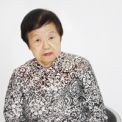
- Workers and factory in Sai Cheung Street, Loan from money shops was an early source of funding
Chun Fat Plastic Products Factory had ten working desks inside the factory site on Sai Cheung Street, Sai Wan. Apart from the approximately 100 workers, they also hired outside mould master to make the moulds they needed. There were 20 male mechanics and about 60 female packaging workers. Sai Cheung Street was a hub for Fujian people and a lot of female workers came from Xiamen. These female workers were responsible for packaging and operating the injection moulding machines. The employees in those days were loyal, according to Lai. For example, some of them were willing to sleep on wooden boxes on the roadside in order to watch over the goods and prevent theft. The factory was located on the ground floor of a tenement building on Sai Cheung Street. The penthouse was used as packaging workshop. After the female workers finished their work, the men would rest on the desks while the Lee family slept upstairs.
The starting capital of Chun Fat was about 10,000 dollars which the Lee couple spent mainly on buying machines. In the 1950s, their funding came from their savings while not much came from bank loans. When business expanded, however, they had to rely on loans. In the beginning, through their friend’s introduction, they borrowed from a money shop which charged an interest of as high as 15%. The loans were approved on the basis of trust so there was no need for putting down collaterals. The money shop they borrowed from was in essence a rice merchant who also gave loans . One of the famous money lenders of this kind was Lui Hing Hop. The borrower could use the loan three days after they completed the borrowing procedures. Sometimes, factory owners who needed money urgently would collateralize their clients’ cheques in exchange of quick cash. Lai believed these owners had difficulty seeking loans from banks. In the 1960s, the Lee couple’s business improved, so did their credibility. They would be given promissory notes by the banks which promised to pay the payee after a few days’ time. The raw materials suppliers were also more willing to let the couple buy upon credit.
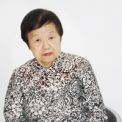
- Business crisis in the mid-1960s: Loss of talents and shortage of cash
In the 1960s, the Lee couple gave birth to many children. Lai found it hard to handle both family and work simultaneously. Chun Fat suffered losses because they appointed a person who wrongly calculated the cost and chose to cover up the bad account. In 1965, one employee left with a number of skilled workers from various departments to start a new business. They became Chun Fat’s competitor. This incident caused the factory to struggle for survival because of the shortage of cash. Thanks to a friend’s introduction, Lee managed to borrow $50,000 from the Canton Trust and Commercial Bank by signing another 50,000-dollar loan as guarantee. In return, they were asked to pay $250,000 including interest. The manager later allowed the couple to pay back only the principal without any interest, which helped the business get back on track. The couple cleared all debts in three years’ time. Before the end of the repayment period, the Canton Trust and Commercial Bank closed down, but the couple kept their words and paid their remaining debt. By the end of the 1960s, as export became profitable, Lai began to invest in the properties and stock market. Lai did not believe the riot in 1967 and the stock market plunge in 1973 affected Silver Mfy much.
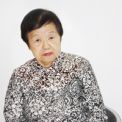
- Product development: from pacifiers, toys, and doll parts, Expansion of factory size: from Sai Wa...
Silver Mfy’s major products in chronological order were pacifiers, toys, and doll parts (make-up tools and doll costumes). They made combs for a short time during the early days. Plastic flowers were popular in the 1960s, and Silver Mfy made them according to America client’s chosen style. A lot of plastic factory shifted to making plastic flowers. Such flowers needed similar machines as those used for making pacifiers. The factory owners generally calculate their moulding cost based on the quantity ordered, so the industry was not much affected despite the rapid changing demand in product types. Silver Mfy stopped producing pacifiers in the early 1960s and moved toward diversification by making plastic flowers, make-up toys and electroplates (such as hoods of toy cars) for American, British and Japanese markets. Each time Silver Mfy stopped making a certain product, the mould would be scrapped and sold, hence they could adapt easily when changing from one good to another.
Silver Mfy’s electroplating techniques were more advanced than their counterparts; as a result their electroplated products brought them the greatest profit margin. However, there was less demand for electroplated products than make-up toys. Silver Mfy (then still known as Chun Fat) was first set up on Jervois Street. They moved to Sai Cheung Street, Sai Wan in 1956 to a 10000-square feet site occupying two floors. They also bought the penthouse and the shop next door, raising the factory’s total area to 20,000 square feet. As business grew, Lee heard that the rents for East Asia Godown, located on the seashore of Kennedy Town, was low. He therefore moved the factory to a 30,000-square feet new site over there. In the early 1970s, when Silver Mfy had secured enough funds, they bought their current 20,000-sqaure feet site on Wong Chuk Hang Road by a sum of 310,000 dollars. They also added a ceiling on the top level for storage and packaging use. Lai recalled that the site was humble and crude in those days, but they and their workers were not afraid of enduring hardship.
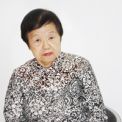
- Developing production in the Mainland China: Xinhui, Dongguan and Bao’an
The Lee couple began planning their factory in Mainland China since 1975, and they eventually moved the majority of their production northward away from Hong Kong in 1981. They first settled their factory in their hometown of Hetang, Xinhui. They processed semi-finished goods and sent half of the products back to Hong Kong for packaging. The Wong Chuk Hang site was still in operation. But later on, all of the packaging was done in Mainland China. The Hetang government invited the Lee couple to go back and even built the factory for them. The site was small and remote, which made it inconvenient for the Lees. Therefore they set up new branches in Dongguan and Bao’an, where they could more easily manage the production. Silver Mfy used to settle in the township of Dongguan, but they pulled out of the place soon because it was too distant. Then in 1995, Silver Mfy established Sunyick Plastic Products (Shenzhen) Co., Ltd in Bao’an. Around that time, all production in Hong Kong was already terminated. The mainland Chinese officials welcomed Silver Mfy’s investment and offered favourable terms for them. The greatest challenge, according to Lai, was that the mainland Chinese workers were difficult to discipline. After the Lees resettled in Hong Kong, they joined a number of townsmen societies while staying in touch with the mainland and donating money to build schools in their hometown. Lai regarded herself as a Hong Kong person, but she was gratified by the fact that she could help her townsmen. She still cared about her hometown.
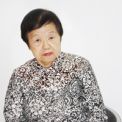
- Factory relocation contributed to the expansion of production capacity, Gradual shrinking of loca...
In the early 1970s, Silver Mfy’s business was growing and had to move their site from Sai Wan to Wong Chuk Hang. The Lees couple had enough capital to invest in properties. Sometimes they got too busy to respond to every incoming order, so they would outsource their production to other factories and supply them with raw materials as well as the moulds. The outsourced production was supervised. From 1978, Silver Mfy moved their production line to Mainland. The labour supply was ample in the mainland, and they would select younger and smarter workers from the pool. The value of RMB was low, so this helped lower the production cost. While Hong Kong’s labour regulation became more developed, it pushed up local production cost.
At first, the Lee couple chose to open their factory near their hometown. But since it was remote, they moved again to Bao’an. After they had moved north, foreign clients such as Mattel and MacDonald’s approached them and placed their orders with them. Lai and her sons had to travel north weekly to manage the factory. Around 1988, all of Silver Mfy’s production lines had been relocated to the mainland. In the transitional period before that happened, both the mainland and Hong Kong sites operated at the same time. The former was responsible for more complicated procedures, while the latter focused on packaging. As Hong Kong’s operation gradually waned, the workers were laid off in small batches. Since employee-employer relationship was harmonious at Silver Mfy, the laid off workers did not go on any protest. After moving north, the factory’s production capacity increased tremendously. It could take up to 100 million dollars worth of order. At its peak, the Hong Kong employed 500 people. In contrast, the mainland firm hired 10,000 people at the highest. At that time, the children of Lai had begun to take over. The company’s heyday was from 1992 to 2000.
Copyright © 2012 Hong Kong Memory. All rights reserved.
| Set Name |





